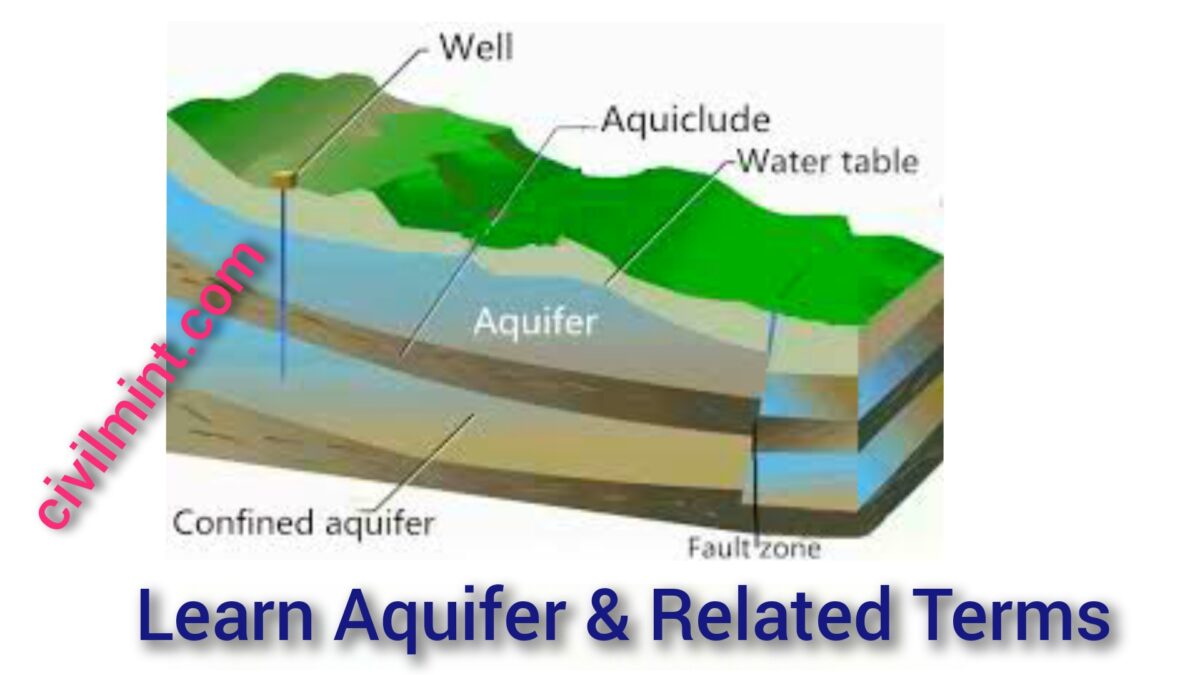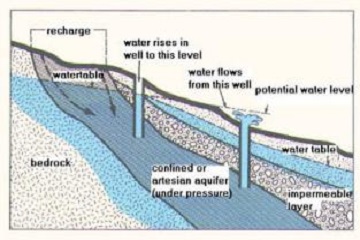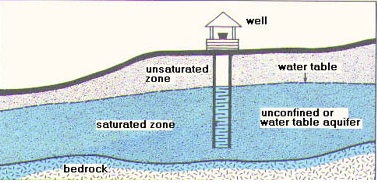In this article, I will discuss about aquifer, aquifer definition, and types of aquifers.
Let’s start!
Table of Contents
Aquifer Definition
An aquifer is an underground layer of rock, sand, or gravel that can hold and transmit water.
What Is An Aquifer?
The aquifer is the geological formation of an underground layer bearing permeable gravel, sand, or silt that can store, transfer, and yield water to a spring or a well.

It provides a significant amount of freshwater to wells, springs, and other water sources and can be replenished through natural processes such as rainfall and snowmelt. Aquifers are vital sources of water for drinking, agriculture, and industry.
The study of water flow in aquifers and the characterization of aquifers is known as hydrogeology.
Importance Of Aquifers:
Aquifers play an important role in the storage and transport of groundwater, acting as natural sources of groundwater. They provide an important source of fresh water for various purposes, especially in arid and semi-arid regions where surface water resources are scarce.
These subterranean formations form over a long period of time as rain or melted snow, and accumulate in porous rocks or soils at varying depths. Aquifers vary in size and quality depending on topography and recharge rates.
Aquifers support ecosystems by feeding wetlands, streams and rivers, and even moderate climate by slowly storing and releasing carbon.
Our activities like agriculture, industry and urbanization pose a threat to water resources through pollution. Overuse and depletion can also lead to soil erosion, salt water seepage and adverse effects.
Sustainable management and protection from pollution are critical to ensuring the long-term availability and quality of water resources. By doing this, both humans and the environment will benefit.
Classification of Aquifers:
Classification According to the Structure and Hydraulic Behavior:
1. Confined Aquifers or Artesian Aquifers:
Confined Aquifers are those which are enclosed within the surrounding rock that prevents water from seeping into the aquifer from the ground surface located directly above. Instead, water drips into confined aquifers from farther away from where the impervious layer doesn’t exist. It forms when water gets collected, by pressure or gravity among two layers of impervious rock. They are fed by underground tributaries.
The formula for calculation of discharge for Confined Aquifers:


2. Unconfined Aquifer or Non-Artesian Aquifers:
Unconfined aquifers are those into which water permeates from the ground surface directly above the aquifer. Unconfined aquifers forms at a faster rate as compared to confined aquifer because they are in closer proximity to water sources from rain, streams, or rivers.
The formula for calculation of discharge for Unconfined Aquifers:


Classification According to the Mobility of Water:
3. Aquifuge:
It is that geological formation containing no interconnected openings and therefore neither transmits nor stores water. Ex- Granite rock
4. Aquitard:
The impervious and semi-confined geological formation does not yield water to wells due to its lesser permeability. Ex- Shale or Clay lenses interbedded with sand.
5. Aquiclude:
It is highly porous, storing huge quantities of water but cannot transmit water. Ex- Clay layer.
